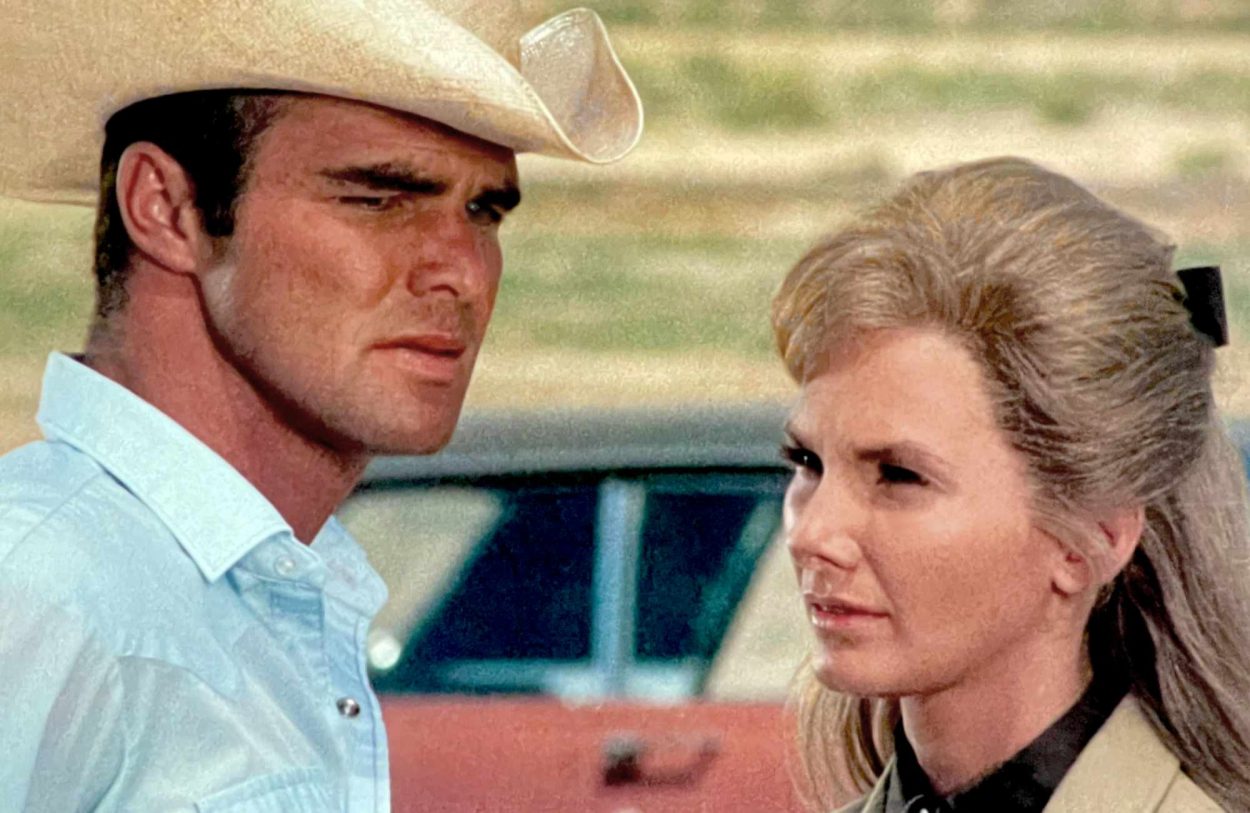This year we said goodbye to the remarkable Gene Wilder. His passing was heartbreaking for every cinephile, but if you were raised on Young Frankenstein (Mel Brooks, 1974), his death meant something else completely. If you witnessed the film initially in the movie theaters, you are extremely lucky. If you didn’t, you get the remarkable experience of seeing it this weekend at the New Beverly Cinema in 35mm, on Friday and Saturday, October 28th and 29th.
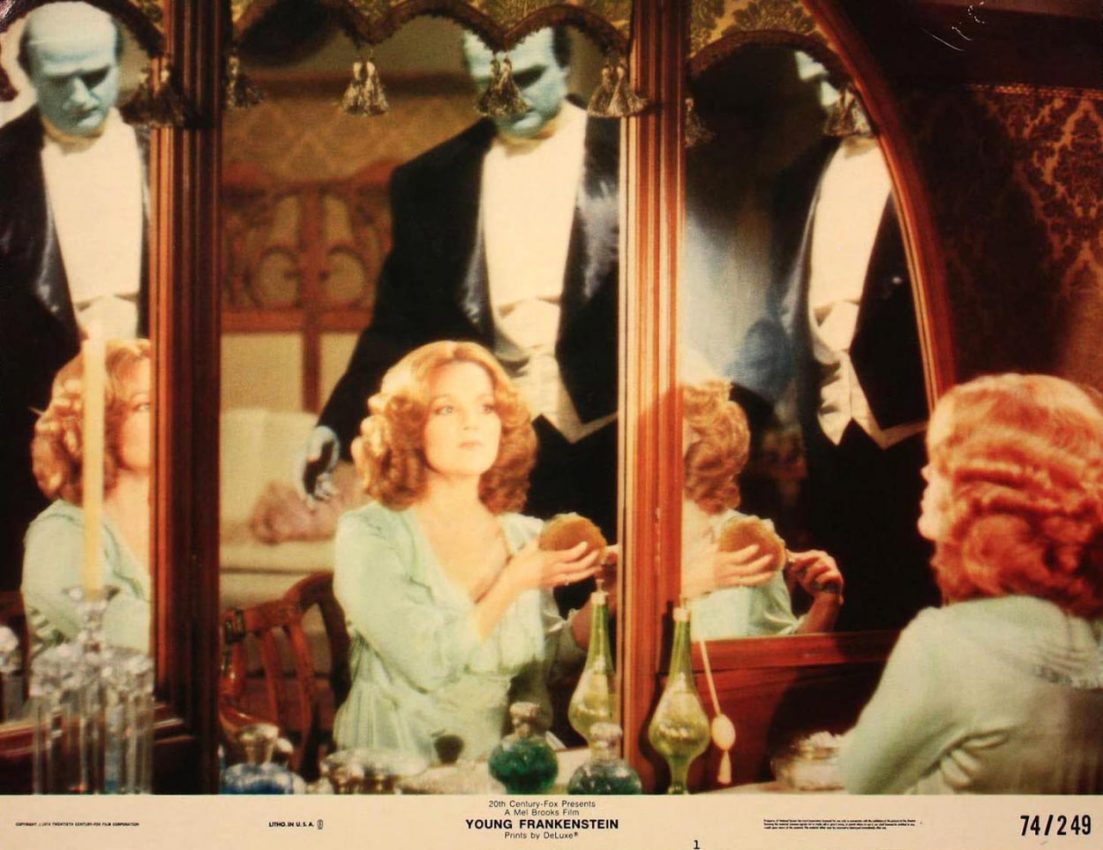
An entire generation rented Young Frankenstein on VHS and memorized it. Bless the parents who said, “Oh, well, it’s a comedy. Not like those films with the bloody covers you keep trying to get me to rent you” or “That’s that Mel Brooks guy? He did The Producers? Sure” or “As long as it’s not rated R, honey.” A community of Gene Wilder, Mel Brooks, Peter Boyle, Marty Feldman and classic horror fans were born with each video rental.
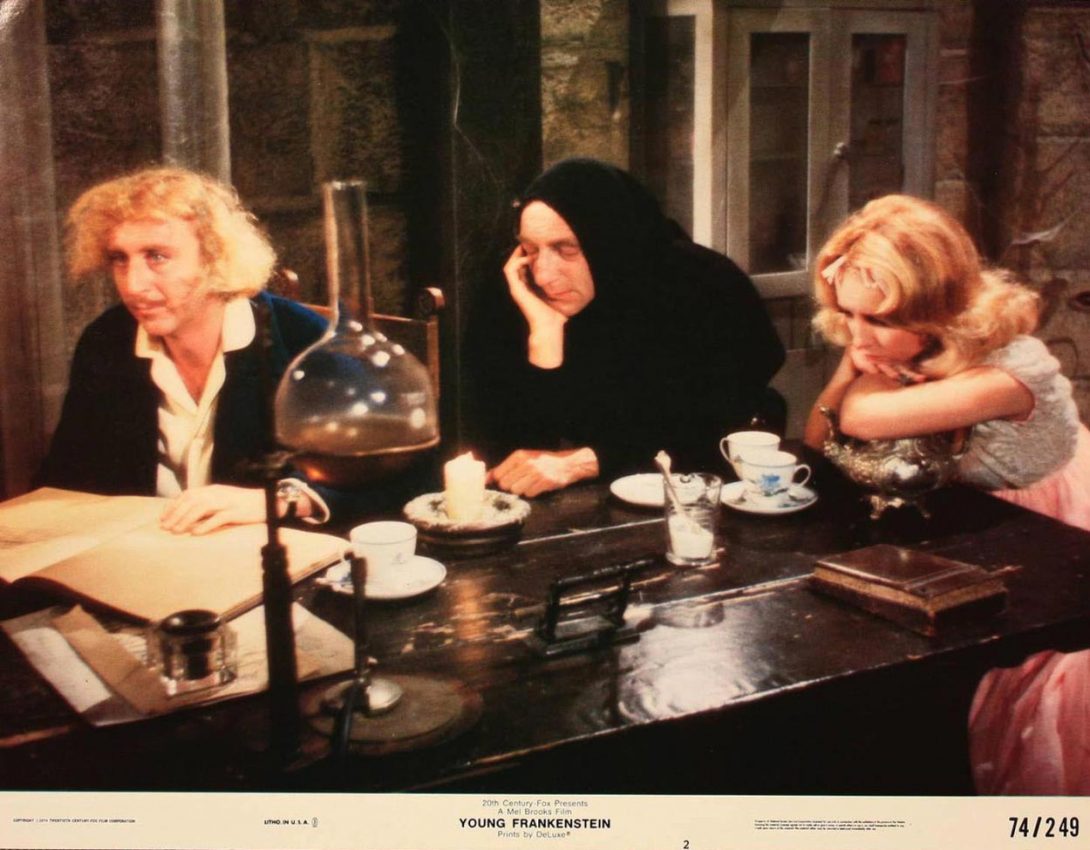
Mel Brooks’ Young Frankenstein is a mixed genre film, announcing itself as such. But that is Mel Brooks’ gift to the world: he takes classic landscapes (western, historical, musical, horror) and platforms them, allowing the audience to enjoy their occasional awkwardness and wonderful silliness. Once you see Young Frankenstein, all the classic Universal works with mad scientists, crazed assistants, beautiful fiancés and weird castles in the middle of nowhere make so much more sense. Young Frankenstein is more than simply an homage to James Whale and Universal – it’s a love letter to many of the greatest horror films and icons of all-time: the Igors, the Frankensteins, the Bride ofs.
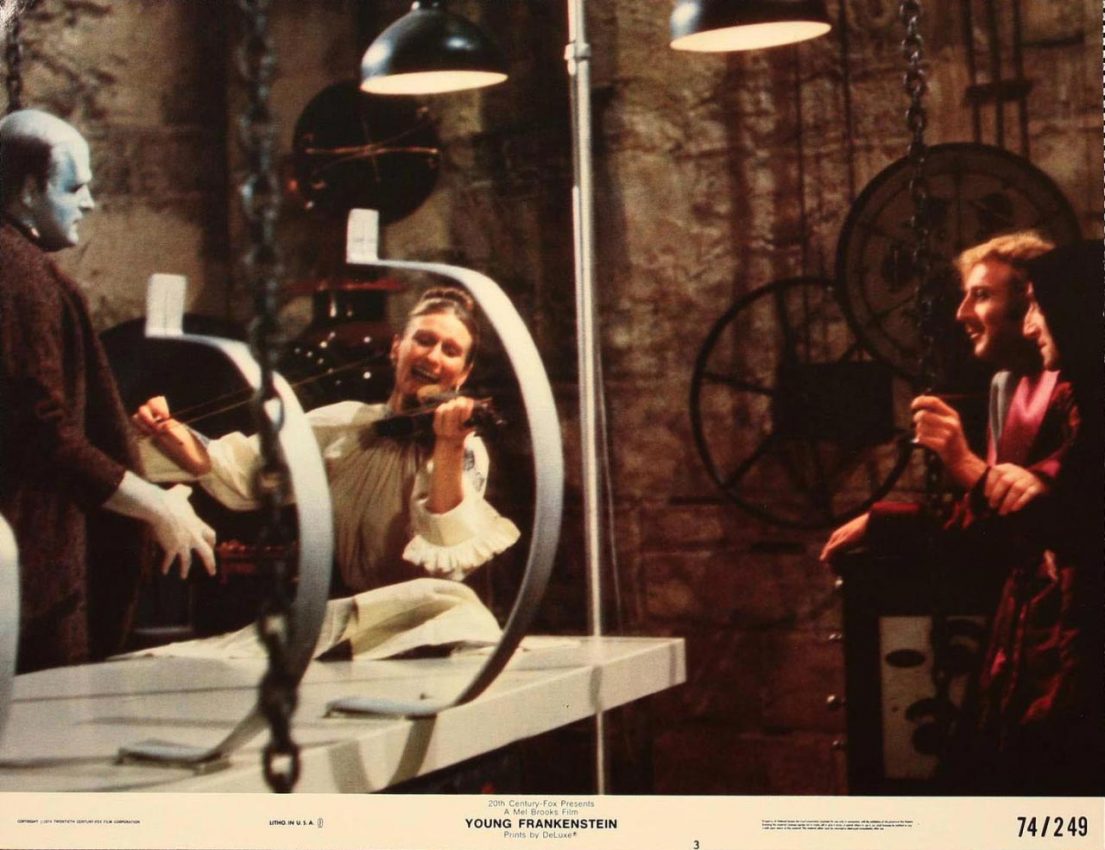
Brooks himself talks about how the horror genre came into his life and the manner in which he explored it to the point of allowing it to evolve into something more than fear and monstrosity. “In 1931, I was 5 and already deep into poverty… They were playing Frankenstein at the Commodore Theater in Williamsburg, Brooklyn. So my mother took me, which was a big mistake – Anyway, that night I said to my mother, ‘Close the window,’ (on the fire escape). She said, ‘It’s hot, air conditioning has not been invented yet.’ Y’know, we’re in the 5th floor of a tenement; we need the window open to get a little air. I said, ‘You have to close it, Frankenstein is going to come up the fire escape and bite me and eat me and kill me’… in those days y’know, movies didn’t play for a week or two they played for a year. So I would go back, my friend Benji and I knew how to sneak in, we’d see Frankenstein every day until he became my pal, I wasn’t afraid of him anymore….”
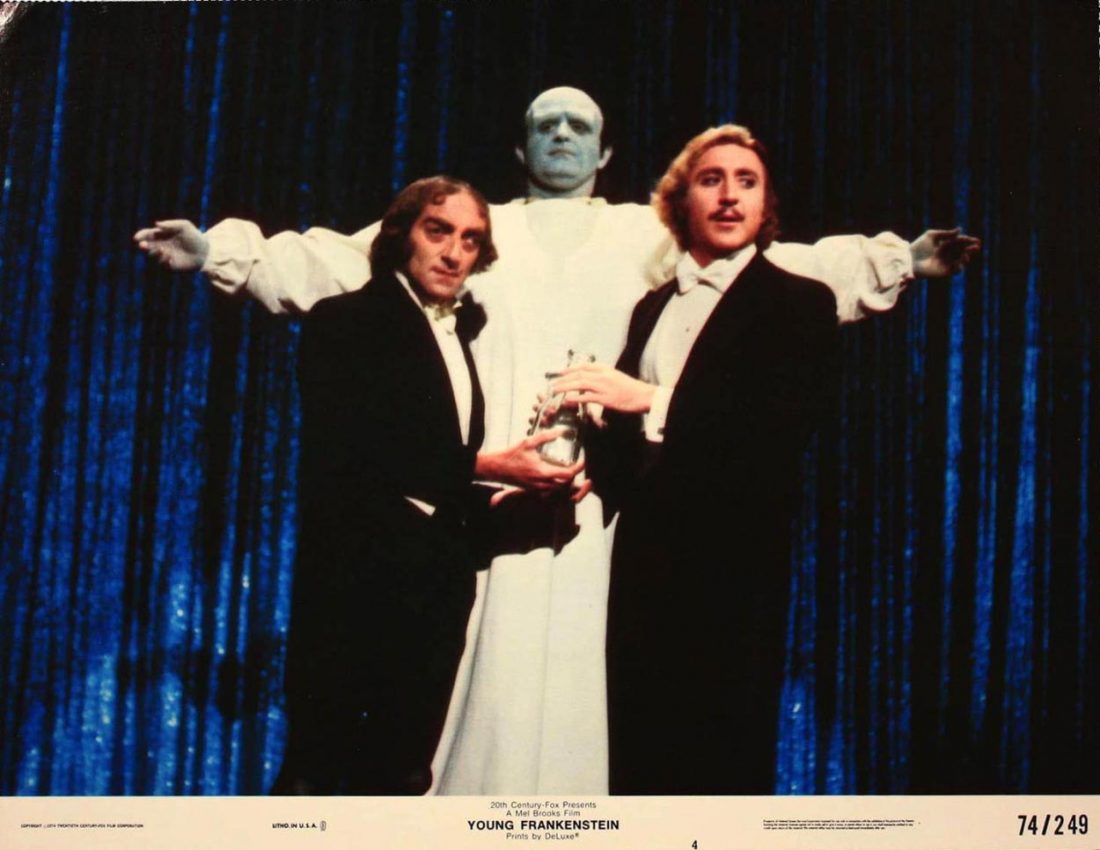
In her groundbreaking piece from 1991, Film Bodies: Gender, Genre and Excess, critical theorist Linda Williams wrote that certain film genres produce physical reactions in the viewer that are practically impossible to halt. She calls special attention to what are generally viewed as “low brow” works or genres that are looked down upon in the general eye – pornography, horror and melodrama. All three genres produce a genuine physical reaction (screams/tears/etc) to the visual material being shown on the screen. In a sense, these genre works are all highly provocative works, perhaps more so than those that do not evoke a response. She brings up comedy but points out that comedy is more “acceptable” in the social stratosphere. So what happens when you mix genres? Is this a way of “lifting” a genre from the gutter or is it (then) a filmmaker’s way of saying that these genres can play together nicely and there is no “lowbrow”? Are making a mistake by looking down on films that might be overly melodramatic, grossing us out or making us scream?
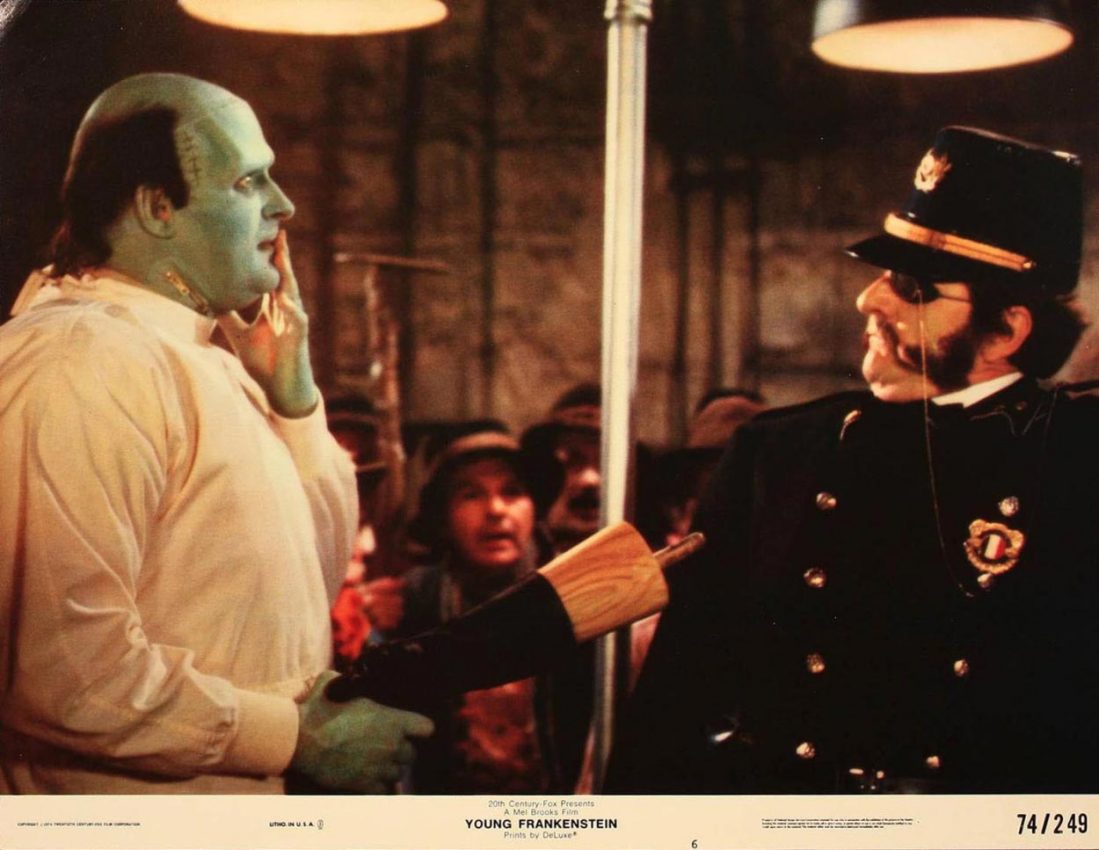
Mel Brooks’ combination of horror and comedy allows us to participate fully in Williams’ discourse of physical/visual explosiveness: we burst forth in laughter, we allow our physical bodies to become fully immersed in the experience of the picture show. This is not a bad thing. The concept that we must retain some kind of reservation and not enjoy ourselves fully – not cry at a film, not experience it fully with every bit of our being – is a new and ridiculous idea. And an audience that doesn’t laugh loudly at Young Frankenstein might need to see a doctor about that sense of humor button.
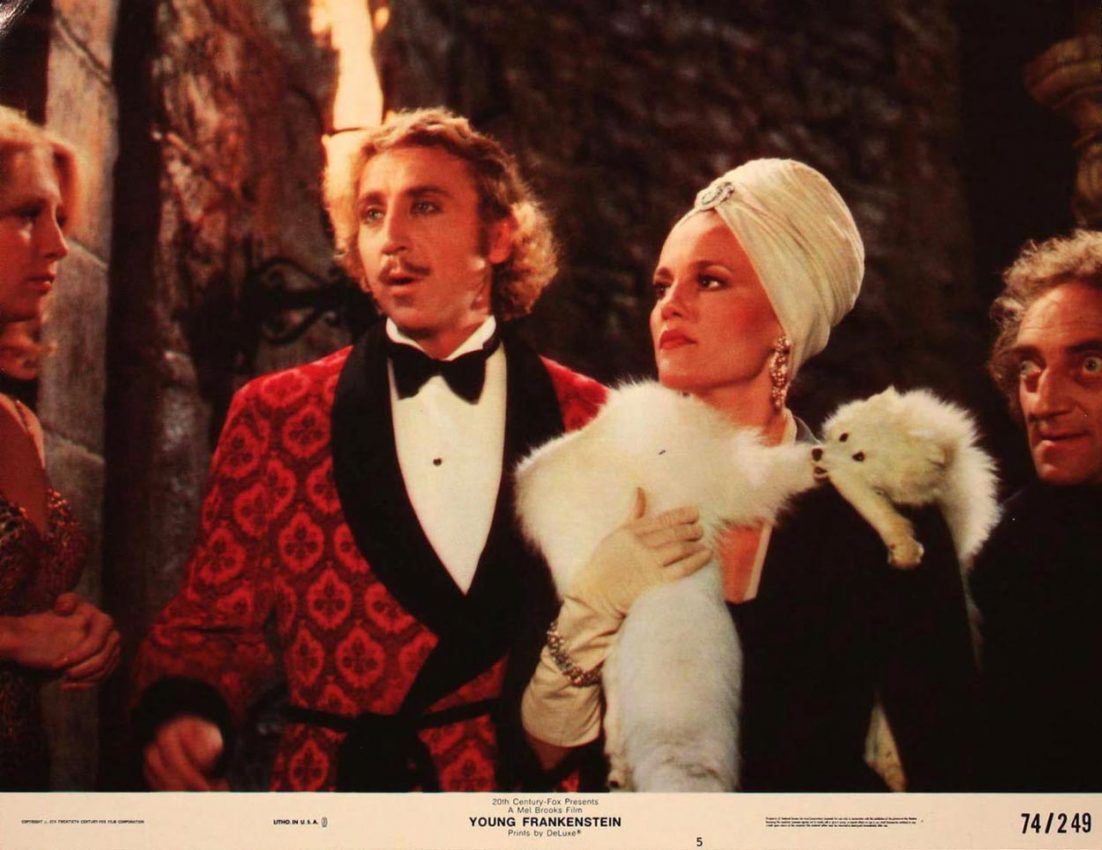
Interviewed at the TCM Film Festival in 2012, Mel Brooks talked about the genesis of Young Frankenstein: “So Gene [Wilder] was on the set of Blazing Saddles and scribbling on a legal pad and I said ‘what’re you writing?’ And he said, ‘I got this wacky idea about the son of Victor Frankenstein calling himself Fronkensteen because he’s embarrassed about the name Frankenstein, he didn’t want anyone to know.’ I said, ‘That sounds good.’ So we met, we talked about it, I said, ‘Come on. It’s your idea. I’ll give you first billing, we’ll write it together, and I’ll direct it.’ He said ‘ok, I’ll do it on one condition’ ‘Ok – what?’ ‘That you don’t appear in it… when you act in something, you lose all your focus and you’re worried about how you look and I want all your attention.’ And he was actually right.”
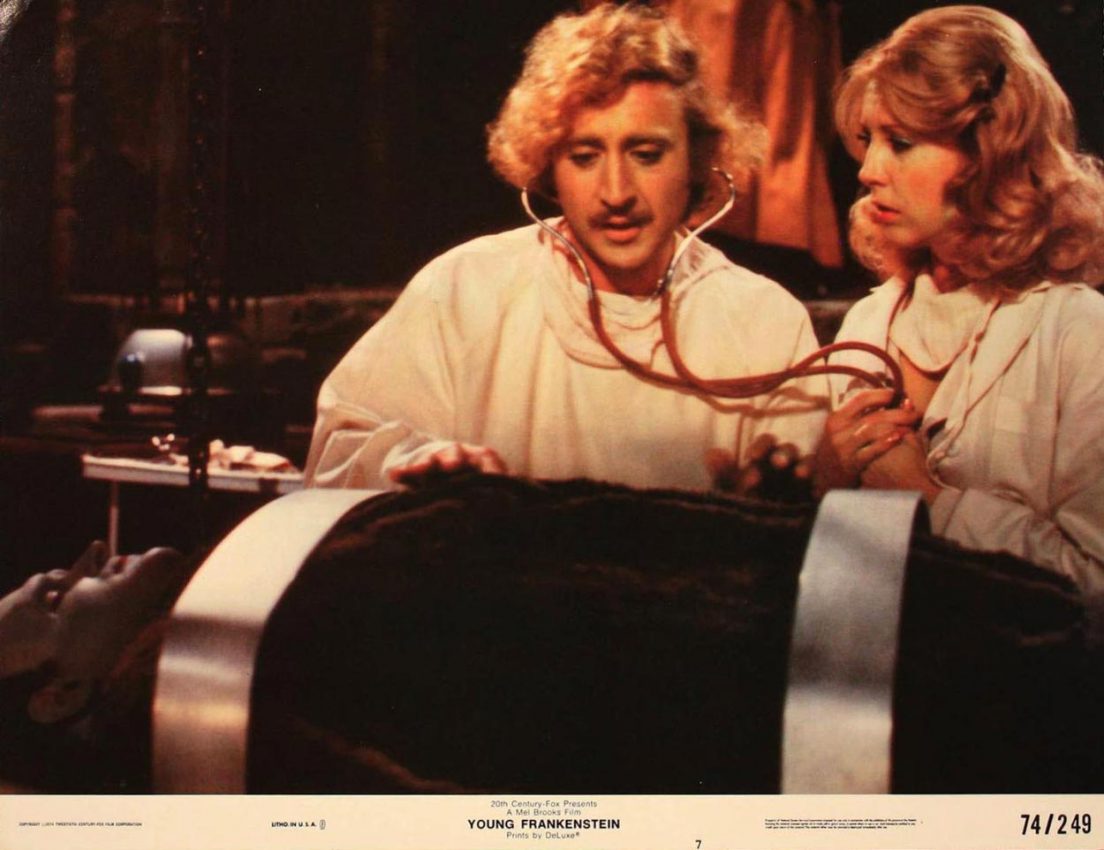
While the film was supposed to be made by Columbia, and all things had been okayed, money was flowing, everyone was thrilled, Mel hadn’t let them know one final point: the film was to be made in black-and-white. When Brooks informed them of this fact (at the very end of the a meeting, while walking out the door in a very “oh, by the way” fashion) they freaked. Columbia tried to convince him to shoot in color and then have it desaturated so that (from their perspective) it was “practically black and white”! Brooks was having none of that. He knew that desaturation would not give the film a true black and white image.
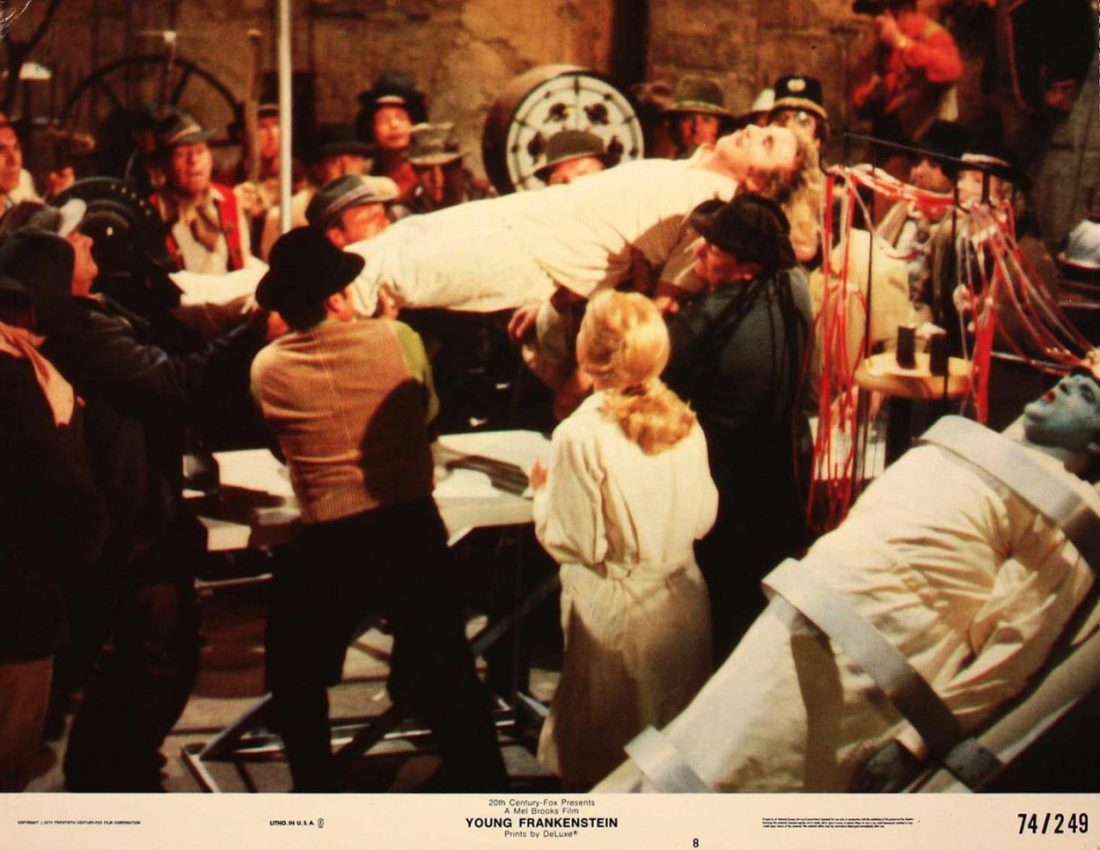
Young Frankenstein was intended to be a beautiful marriage of visuals as well as genres: shooting in black and white was necessary. Alan “Laddie” Ladd Jr (an industry legend in his own right) at Fox said: no problem. We’d love to do this. So they did. The rest, as they say, is history.
In 2003, Young Frankenstein was selected by the National Film Preservation Board to be on the National Film Registry and worthy of preservation due to its “cultural, historical or aesthetic significance.” Whether you’re revisiting it or seeing it for the first time, Young Frankenstein’s significance cannot be measured…except in laughter. Laugh hard, laugh loud, and enjoy this delightful classic of American cinema.

